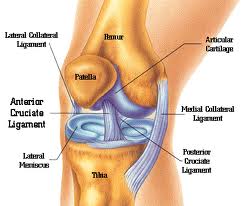Unwanted hair in our body
The normal amount of body hair for women varies. Most of the time,
a woman only has fine hair, or peach fuzz, above the lips and on the
chin, chest, abdomen, or back. If you have coarse, dark hairs in
these areas, the condition is called hirsutism. Such hair growth is
more typical of men.
Causes
Women normally produce low levels of male hormones (androgens).
Body makes too much of this hormone, may have the chance to getting
unwanted hair growth.
In most cases,hair growth is tends to acumulate depening on the
families. In general, hirsutism is a harmless condition.
A common cause of hirsutism is polycystic ovarian syndrome (PCOS).
Women with PCOS and other hormone conditions that cause unwanted hair
growth and also have acne, problems with menstrual periods, trouble
losing weight, and diabetes. If these symptoms start suddenly it
getting a chance to, have a tumor that releases male hormones.
Other, rare causes of unwanted hair growth may include:
- Tumor or cancer of the adrenal gland
- Tumor or cancer of the ovary
- Cushing syndrome
- Congenital adrenal hyperplasia
- Hyperthecosis (a condition in which the ovaries produce too much male hormones)
- Use of certain medicines, including testosterone, danazol,
anabolic steroids, glucocorticoids.
Rarely a woman with hirsutism will have normal levels of male
hormones, and the specific cause of the unwanted hair growth cannot
be identified.
 |
| ovarian cyst |
 |
| over productive ovaries |
Home Care
Hirsutism is generally a long-term problem. There are a number of
ways to remove or treat unwanted hair. Some treatment effects last
longer than others.
- Weight loss in overweight women can reduce hair growth.
- Bleaching or lightening hair may make it less noticeable.
Temporary hair removal options include:
- Shaving does not cause more hair to grow, but the hair may look thicker.
- Plucking and waxing are fairly safe and are not expensive. However, they can be painful and there is a risk for scarring, swelling, and skin darkening.
- Chemicals may be used, but most have a bad odor.
Permanent hair removal options include:
Electrolysis uses electrical current to permanently damage
individual hair follicles so they do not grow back. This This method
is expensive, and multiple treatments are needed. Swelling, scarring,
and redness of the skin may occur.
Laser hair removal uses laser aimed at the dark color (melanin) in
the hairs. This method is best if a very large area needs to be
treated and only if the hair is particularly dark (does not work on
blond or red hair).
Contact a Medical Professional
Call your health care provider if:- The hair grows rapidly
- You also have male features such as acne, deepening voice, increased muscle mass, and decreased breast size
- You are concerned that medication may be worsening unwanted
hair growth
Blood tests may be done, including:
- Testosterone
- Dihydroepiandrosterone sulfate (DHEA-S)
- Luteinizing hormone (LH)
- Follicle stimulating hormone (FSH)
- Prolactin
- 17-hydroxyprogesterone
If a tumor is suspected, x-ray tests such as a CT scan or
ultrasound may be recommended.
Medications or other treatments.
- Birth control pills. It may take several months to begin noticing a difference.
- Anti-androgen medications such as spironolactone may be tried if birth control pills do not work. There is a risk of birth defects if you become pregnant while taking these medicines.
- Laser hair removal or electrolysis.
Way to remove trouble
There are also some additives you can use in your massage oil that
will help to reduce hair growth on the body. Since you have not
stated where the hair growth is, general information can be given
about it. Make a pasty mix of gram flour, yogurt and a few drops of
olive oil. This solution is to be rubbed all over the part of the
body that has unwanted hair. This will make the hair come out quite
easily. You can apply this paste and leave it on till it dries a bit.
Then start rubbing it off. This is the most highly effective method
to get rid of unwanted hair. If you repeat this procedure once a week
for a few months, you will notice that the hair will gradually stop
reappearing. Alternately, you can also try this method. Make a ball
of well kneaded dough. Dip this in oil and keep rubbing over the
areas where you have hair. This will also reduce hair growth in the
area to a very large extent. You need to keep in mind that these
practices will have to be followed on a regular basis for results to
show up.























